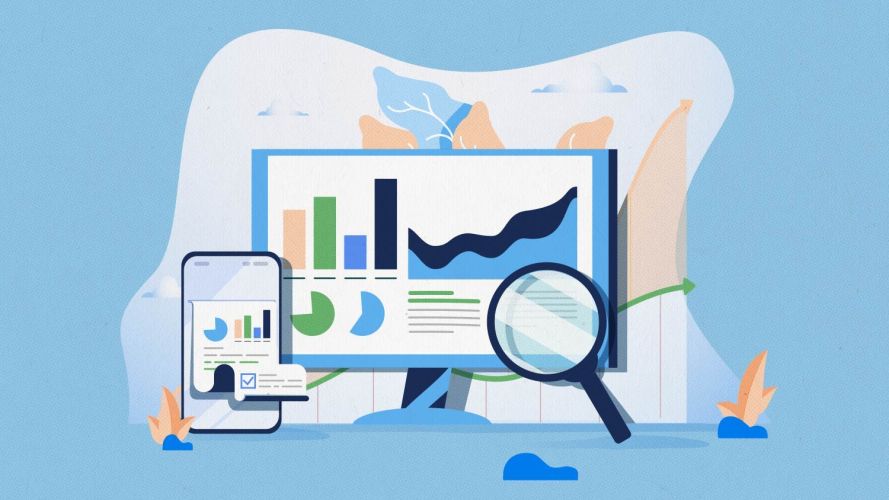What is First Party, Second Party and Third Party Data?



Discover the power of first party data for your business. Learn how your company can collect valuable insights directly from your audience, including customers, website visitors, and social media followers. Click now to learn more!

Jackie Yeaney
What is First Party Data?
First party data refers to the data collected directly by your company from your audience, including customers, website visitors, and social media followers.
As the first party, your business gathers unique information about your audience without any intermediary involved. First party data encompasses various types of data, such as:
- Demographic information
- Behavioral data from website, app, or product interactions
- Data stored in your CRM
- Social media conversations
- Subscriptions and email engagement
- Survey responses
- Customer feedback
- Purchase history
- Online chat transcripts
Why is first party data important?
First party data holds significant value as it is collected directly from your own audience, enabling you to understand and engage with them effectively. It allows you to retarget and nurture your audience based on their preferences and behaviours, leading to improved marketing and decision-making processes.
According to Think With Google and Boston Consulting Group, brands that leverage first party data in their marketing functions achieved a 2.9X revenue lift and a 1.5X increase in cost savings.
How is first party data collected?
First party data is collected by implementing tracking pixels on your website, product, or social media profiles. These pixels track user behaviours and actions, storing the data in your CRM or customer data platform (CDP). For example, when visitors land on your website, view products, or interact with social media posts, the tracking pixel records those actions.
You can also gather first party data through customer surveys, direct conversations, or any shared information about their experiences with your business. It’s important to note that aggregating customer product reviews from platforms like Amazon would not be considered first party data.
How is first party data used?
First party data serves various purposes, including retargeting through advertisements, nurturing leads and informing the sales process. It also helps identify the characteristics of your ideal customers, enabling more targeted outreach and marketing efforts.
For instance, if you have ever viewed a product online and later encountered ads for that same product, it demonstrates the effectiveness of first party data retargeting.
You might also be familiar with second or third party data — here’s a breakdown of the differences.
Second Party Data
Second-party data refers to information that you obtain from a source other than your own direct data collection. In other words, it is data collected by someone else, but you have a trusted relationship with the data provider. This type of data exchange occurs between businesses that mutually benefit from sharing audience insights.
For instance, let’s consider a software company collaborating with an agency partner to resell its products. The software company may share its first party data with the agency, allowing the agency to use it as second-party data to target and attract new clients.
How is second party data collected?
Second-party data is acquired from sources outside your own business and not directly through actions taken by your organisation, such as conducting product satisfaction surveys.
One way to obtain second-party data is by purchasing it from a reliable source that possesses the data you require. However, while this method is faster than collecting the data yourself, it carries some risk, as you may spend money on data that is not relevant or useful to your specific needs. It is advisable to request a preview or summary of the data before making a purchase to ensure its relevance and suitability for your company.
How is second party data used?
First party and second-party data are used in similar ways, such as creating targeted ads, nurturing leads, and streamlining the sales process. The distinction lies in the perspective that second-party data offers, providing you with insights and perspectives on your customers that you may have overlooked or not included in your own research.
By leveraging second-party data, you can uncover trends, patterns, and customer needs that supplement your existing knowledge. It offers a fresh viewpoint and can help enhance your business processes and product offerings. However, it’s important to note that second-party data should not be considered the most trustworthy or valuable source of information since it originates from an entity without a direct relationship with your customers. Instead, it serves as a valuable supplemental source of insights.
Third Party Data
Third-party data refers to data collected by a business that has no direct connection to your own business or audience. Its scope is broader compared to first and second-party data.
Third-party data is often gathered from multiple sources and is sold or purchased by companies to gain insights into audiences. However, since it is not directly collected from your own paying customers and is also accessible to your competitors, its usefulness may be limited compared to first or second-party data.
Nevertheless, third-party data can provide a broader perspective on audiences that your own data might not capture.
How is third party data collected?
The collection process for third-party data is similar to that of first and second-party data. Researchers employ methods such as surveys, interviews, feedback forms, and more to gather information about a large audience. Organisations can then acquire this data for their own use, much like second-party data.
One distinction is that third-party research often involves random sample sizes, with participation open to anyone willing to fill out the forms. As a result, the results are not directly derived from your own customers. While this approach yields a larger number of participants and responses, the information may not always be highly relevant or useful for your specific business needs.
How is third party data used?
While it may be tempting to rely solely on third-party data in place of conducting your own research, it is best used as a complement to your first party data. Remember that having more results does not necessarily mean it is more applicable to your business.
Instead, start by analysing your first party data to identify trends and patterns in customer behaviour. Then, compare your findings with the third-party data, specifically targeting respondents who align with your buyer personas. This allows you to determine if the behaviours you observed align with the majority of your target market. By combining both sources of data, you can gain a more comprehensive understanding of your audience and make informed business decisions.
Why is first party customer data more reliable?
With the end of third-party cookies on the horizon, 68% of marketers have a fully defined strategy to shift toward first party data.




FAQs
What is first party data?
First party data, also referred to as 1P data, pertains to the data that a company directly acquires from its customers and has legal ownership of. This data serves as a valuable piece in the pool of information that marketers can utilise. It has the potential to complement, augment, or even replace other types of data.
What is 1st, 2nd and 3rd party data?
In summary, first party data is the most trustworthy and distinctive information, as it originates from your own sources. Second-party data is shared with different partners, which may result in reduced accuracy. Conversely, third-party data is a collection of information from relatively obscure sources.




















